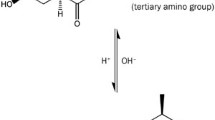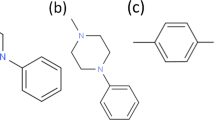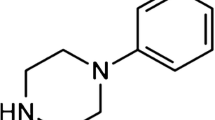Abstract
Previous animal and patient-based studies have shown that omeprazole induces a transepithelial paracellular gastric leak. This study reports on the potential for an omeprazole-induced leak of drugs with narrow therapeutic windows. Ussing chamber experiments investigated the effects of omeprazole on rat gastric corpus permeability to the drugs, digoxin and phenytoin. Digoxin (780 MW) permeated the gastric mucosa at an accelerated rate in the presence of omeprazole. This leak could contribute to dangerous elevations of blood digoxin levels in certain situations. Omeprazole was found to have no effect on the flux rate of phenytoin (252 MW). The tight-junctional leak generated by omeprazole thus exhibits specificity to the types of molecules it allows to permeate through the gastric mucosa. This leak may pose a clinical danger by increasing drug uptake into the bloodstream, a phenomenon which would act synergistically with the effect of omeprazole on inhibiting liver cytochrome P450s that remove drugs from the bloodstream, thereby elevating drug blood levels.






Similar content being viewed by others
Abbreviations
- PPI:
-
Proton pump inhibitor
- TLC:
-
Thin-layer chromatography
- LSC:
-
Liquid scintillation counting
References
Mullin JM, Valenzano MC, Whitby M et al. Esomeprazole induces upper gastrointestinal tract transmucosal permeability (R2). Aliment Pharmacol Ther. 2008.
Murray LJ, Gabello M, Rudolph DS et al. Transmucosal gastric leak induced by proton pump inhibitors. Dig Dis Sci. 2009.
Hopkins AM, McDonnell C, Breslin NP, O’Morain CA, Baird AW. Omeprazole increases permeability across isolated rat gastric mucosa pre-treated with an acid secretagogue. J Pharm Pharmacol. 2002;54:341–347. doi:10.1211/0022357021778583.
Mulrow CD, Feussner JR, Velez R. Reevaluation of digitalis efficacy. New light on an old leaf. Ann Intern Med. 1984;101:113–117.
Appleton R, Macleod S, Martland T. Drug management for acute tonic-clonic convulsions including convulsive status epilepticus in children. Cochrane Database Syst Rev. 2008;3:CD001905.
Ho PM, Maddox TM, Wang L, et al. Risk of adverse outcomes associated with concomitant use of clopidogrel and proton pump inhibitors following acute coronary syndrome. JAMA. 2009;301:937–944. doi:10.1001/jama.2009.261.
Peterson KU. Review article: Omeprazole and the cytochrome P450 system. Aliment Pharmacol Ther. 1995;9:1–9.
Robinson M, Horn J. Clinical pharmacology of proton pump inhibitors: what the practising physician needs to know. Drugs. 2003;63:2739–2754. doi:10.2165/00003495-200363240-00004.
Dobson JG Jr, Kidder GW. Edge damage effect in vitro frog skin preparations. Am J Physiol. 1968;214:719–724.
Walser M. Role of edge damage in sodium permeability of toad bladder and a means of avoiding it. Am J Physiol. 1970;219:252–255.
Svelto M, Perrini MCR, Lippe C. Properties of the frog skin at various degrees of edge damage. Arch Int Physiol Biochim. 1975;83:837–843. doi:10.3109/13813457509069514.
Kleinzeller A, McAvoy EM, McKibbin RD. Active renal hexose transport. Structural requirements. Biochim Biophys Acta. 1980;600:513–529. doi:10.1016/0005-2736(80)90453-8.
Humphries TJ, Merritt GJ. Drug interactions with agents used to treat acid-related diseases. Aliment Pharmacol Ther. 1999;13(Suppl 3):18–26. doi:10.1046/j.1365-2036.1999.00021.x. (Review article).
Andersson T, Lagerström PO, Unge P. A study of the interaction between omeprazole and phenytoin in epileptic patients. Ther Drug Monit. 1990;12:329–333.
Bachmann KA, Sullivan TJ, Jauregui L, Reese JH, Miller K, Levine L. Absence of an inhibitory effect of omeprazole and nizatidine on phenytoin disposition, a marker of CYP2C activity. Br J Clin Pharmacol. 1993;36:380–382.
Middle MV, Müller FO, Schall R, et al. No influence of pantoprazole on the pharmacokinetics of phenytoin. Clin Pharmacol Ther. 1996;34:S72–S75.
Karol MD, Locke CS, Cavanaugh JH. Lack of pharmacokinetic interaction between lansoprazole and intravenously administered phenytoin. J Clin Pharmacol. 1999;39:1283–1289. doi:10.1177/00912709922011971.
Howden CW. Clinical pharmacology of omeprazole. Clin Pharmacokinet. 1991;20:38–49. doi:10.2165/00003088-199120010-00003.
Andersson T. Omeprazole drug interaction studies. Clin Pharmacokinet. 1991;21:195–212. doi:10.2165/00003088-199121030-00004.
Cederberg C, Andersson T, Skånberg I. Omeprazole: pharmacokinetics and metabolism in man. Scand J Gastroenterol. 1989;166:33–42. doi:10.3109/00365528909091241.
Robertson DS. The chemical reactions in the human stomach and the relationship to metabolic disorders. Med Hypotheses. 2005;64:1127–1131. doi:10.1016/j.mehy.2004.12.018.
Rathore SS, Curtis JP, Wang Y, Bristow MR, Krumholz HM. Association of serum digoxin concentration and outcomes in patients with heart failure. JAMA. 2003;289:871–878. doi:10.1001/jama.289.7.871.
Steinijans VW, Huber R, Hartmann M, et al. Lack of pantoprazole drug interactions in man. Int J Clin Pharmacol Ther. 1994;32:385–399.
Oosterhuis B, Jonkman JH, Andersson T, Zuiderwijk PB, Jedema JN. Minor effect of multiple dose omeprazole on the pharmacokinetics of digoxin after a single oral dose. Br J Clin Pharmacol. 1991;32:569–572.
Kiley CA, Cragin DJ, Roth BJ. Omeprazole-associated digoxin toxicity. South Med J. 2007;100:400–402.
Acknowledgments
We would like to thank the GI fellows, Keith R. Kearney, D.O. and Kevin R. Wolov, D.O., for their helpful input and for sharing their medical expertise. This work was supported by the Sharpe/Strumia Foundation.
Author information
Authors and Affiliations
Corresponding author
Rights and permissions
About this article
Cite this article
Gabello, M., Valenzano, M.C., Barr, M. et al. Omeprazole Induces Gastric Permeability to Digoxin. Dig Dis Sci 55, 1255–1263 (2010). https://doi.org/10.1007/s10620-009-0851-z
Received:
Accepted:
Published:
Issue Date:
DOI: https://doi.org/10.1007/s10620-009-0851-z




